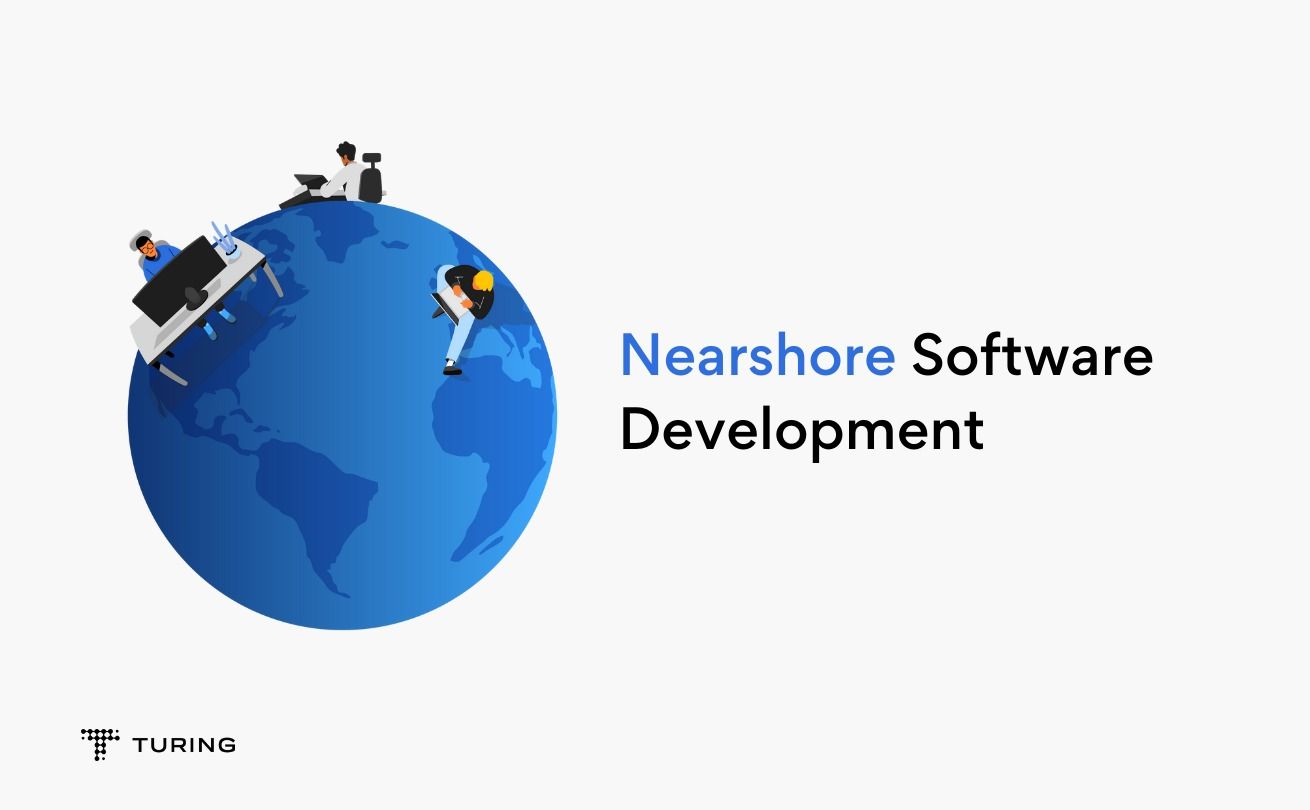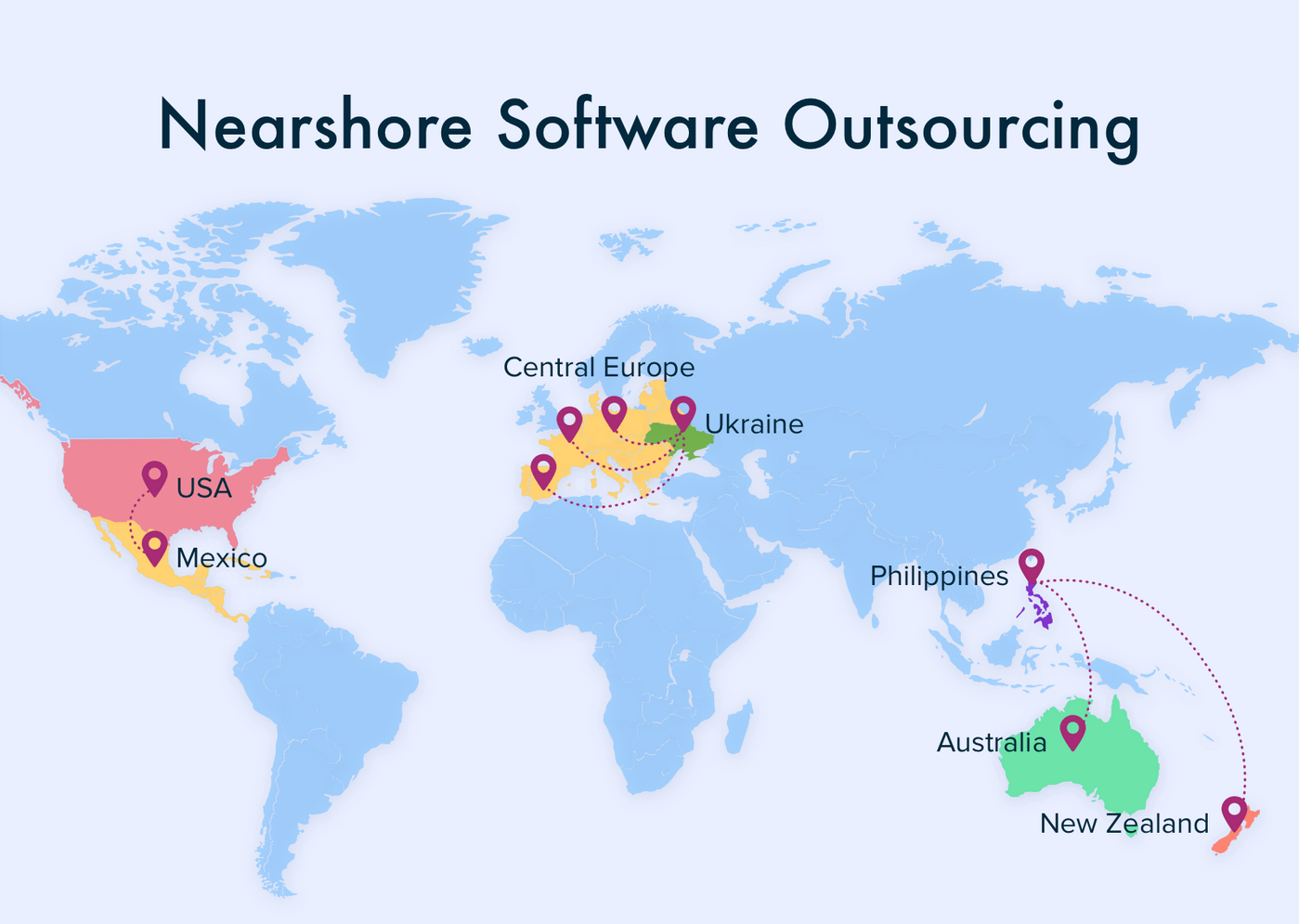Nearshore software engineering development sets the stage for this enthralling narrative, offering readers a glimpse into a story that is rich in detail. In a world where digital solutions are key, the nearshore approach to software development emerges as a strategic choice for many businesses seeking efficiency and collaboration.
Exploring the nuances of nearshore software engineering development reveals a landscape ripe with opportunities and challenges, ultimately shaping the way organizations innovate and grow in the digital age.
Overview of Nearshore Software Engineering Development
Nearshore software engineering development refers to the practice of outsourcing software development tasks to a neighboring or nearby country, typically within the same time zone or a few hours apart. This model offers a middle ground between onshore and offshore development, combining the benefits of both approaches.
Differences from Offshore and Onshore Models
- Nearshore software development involves collaborating with teams in countries that are geographically closer, often sharing similar cultures and languages. This proximity helps in communication and reduces the challenges of time zone differences.
- Offshore development, on the other hand, involves outsourcing to countries located far away, often in different time zones. This can lead to communication barriers and longer response times.
- In contrast, onshore development keeps all software development tasks within the same country as the client. While this ensures close proximity, it can be costlier compared to nearshore or offshore options.
Benefits of Adopting a Nearshore Approach
- Improved Communication: Nearshore development allows for real-time collaboration, reducing misunderstandings and enhancing project efficiency.
- Cost-Effectiveness: While onshore development can be expensive, nearshore offers competitive pricing with high-quality results.
- Cultural Alignment: Working with teams in nearby countries often means a shared culture and similar work ethic, leading to smoother project execution.
- Time Zone Advantage: Nearshore teams operate within a few hours of the client’s time zone, enabling better coordination and faster feedback loops.
- Talent Pool Access: Nearshore locations often have a rich pool of skilled software engineers, providing access to diverse expertise for project requirements.
Factors to Consider When Choosing a Nearshore Software Engineering Partner
When selecting a nearshore software engineering partner, there are several key factors to consider to ensure a successful collaboration. Factors such as timezone, cultural fit, cost-effectiveness, communication infrastructure, and language proficiency play crucial roles in the decision-making process.
Nearshore Locations Comparison
- Timezone: Consider a nearshore location that has a timezone alignment with your team to facilitate real-time communication and collaboration.
- Cultural Fit: Choose a location with a similar work culture and values to ensure seamless integration with your team.
- Cost-effectiveness: Evaluate the overall costs of outsourcing to different nearshore locations, including labor rates, taxes, and operational expenses.
Importance of Communication Infrastructure and Language Proficiency
- Communication Infrastructure: Opt for a nearshore partner with robust communication tools and infrastructure to enable smooth interactions and project management.
- Language Proficiency: Ensure that the team members at the nearshore location are proficient in the language used for communication, whether it is English or another common business language.
Best Practices for Managing Nearshore Software Development Teams: Nearshore Software Engineering Development

Effective management of nearshore software development teams is crucial for the success of any project. By implementing the best practices, you can ensure smooth collaboration, communication, and productivity within your distributed team.
Strategies for Effective Project Management
- Establish clear communication channels: Utilize tools like Slack, Microsoft Teams, or Zoom to facilitate real-time communication and keep everyone on the same page.
- Define project goals and expectations: Clearly Artikel project objectives, timelines, and deliverables to ensure everyone understands their roles and responsibilities.
- Implement Agile methodologies: Agile practices such as daily stand-up meetings, sprint planning, and retrospectives can help maintain focus and adapt to changing requirements.
- Regular progress tracking: Use project management tools like Jira or Trello to track progress, identify bottlenecks, and adjust priorities accordingly.
Tools and Technologies for Collaboration
- Version control systems: Git and GitHub enable seamless collaboration on codebases and ensure version control.
- Virtual whiteboarding tools: Platforms like Miro or Microsoft Whiteboard allow team members to brainstorm and visualize ideas together.
- Video conferencing: Platforms like Zoom or Google Meet facilitate face-to-face interactions, fostering a sense of connection among team members.
Tips for Building Trust and Team Dynamics, Nearshore software engineering development
- Encourage open communication: Create a safe space for team members to share their thoughts, concerns, and ideas without fear of judgment.
- Organize team-building activities: Virtual team-building exercises, such as online games or virtual coffee breaks, can help strengthen bonds and boost morale.
- Recognize and celebrate achievements: Acknowledge individual and team accomplishments to boost motivation and create a positive work environment.
Challenges Faced in Nearshore Software Engineering Development

In nearshore software engineering development, there are several challenges that organizations may encounter due to the distance, cultural differences, and communication barriers inherent in such setups. Addressing these challenges effectively is crucial for the success of any nearshore project.
Communication Barriers in Nearshore Setup
One of the most common challenges in nearshore software development is communication barriers. Differences in language, time zones, and communication styles can lead to misunderstandings, delays, and inefficiencies in project execution.
- Establish clear communication channels: Utilize tools like video conferencing, messaging apps, and project management software to facilitate real-time communication.
- Define communication protocols: Set clear expectations for communication frequency, reporting structure, and feedback mechanisms to ensure transparency and alignment among team members.
- Invest in language and cultural training: Provide language classes and cultural sensitivity training to bridge the gap between team members from different backgrounds.
Mitigating Risks Associated with Cultural Differences
Cultural differences can impact team dynamics, decision-making processes, and overall project outcomes in nearshore software development. It is essential to proactively address cultural challenges to foster collaboration and synergy within the team.
- Promote cultural awareness: Encourage team members to learn about each other’s cultures, traditions, and communication norms to foster mutual understanding and respect.
- Establish a common team culture: Define core values, norms, and behaviors that all team members can adhere to, regardless of their cultural background.
- Organize team-building activities: Facilitate virtual team-building exercises, workshops, and social events to strengthen relationships and build trust among team members.
Managing Geographical Distance Risks in Nearshore Development
Geographical distance can create logistical challenges, coordination issues, and project delays in nearshore software engineering. Implementing strategies to mitigate the risks associated with distance can enhance team productivity and project efficiency.
- Establish overlapping work hours: Coordinate work schedules to ensure that team members in different time zones have sufficient overlap for real-time collaboration and communication.
- Use project management tools: Implement cloud-based project management tools to track progress, assign tasks, and monitor deliverables in a centralized system accessible to all team members.
- Visit onsite periodically: Plan occasional onsite visits to build rapport, strengthen relationships, and align project goals with the client’s expectations.
Last Recap

As organizations navigate the complexities of nearshore software engineering development, one thing remains clear: the future of collaborative and efficient software development lies in embracing the nearshore model. By leveraging the benefits, overcoming challenges, and implementing best practices, businesses can unlock the full potential of their software projects.
Common Queries
What is the main difference between nearshore, offshore, and onshore software development models?
Nearshore software development involves collaborating with teams in nearby countries, offering advantages like similar time zones and cultural affinity. Offshore refers to working with teams in distant countries, while onshore involves local teams.
How can communication barriers in nearshore software development be addressed?
Effective communication tools, regular meetings, and fostering a culture of open communication can help overcome language barriers and ensure smooth collaboration.
What are some common challenges faced in nearshore software engineering projects?
Challenges may include language differences, cultural misunderstandings, and managing different time zones. Implementing clear communication practices and understanding cultural nuances can help mitigate these challenges.
